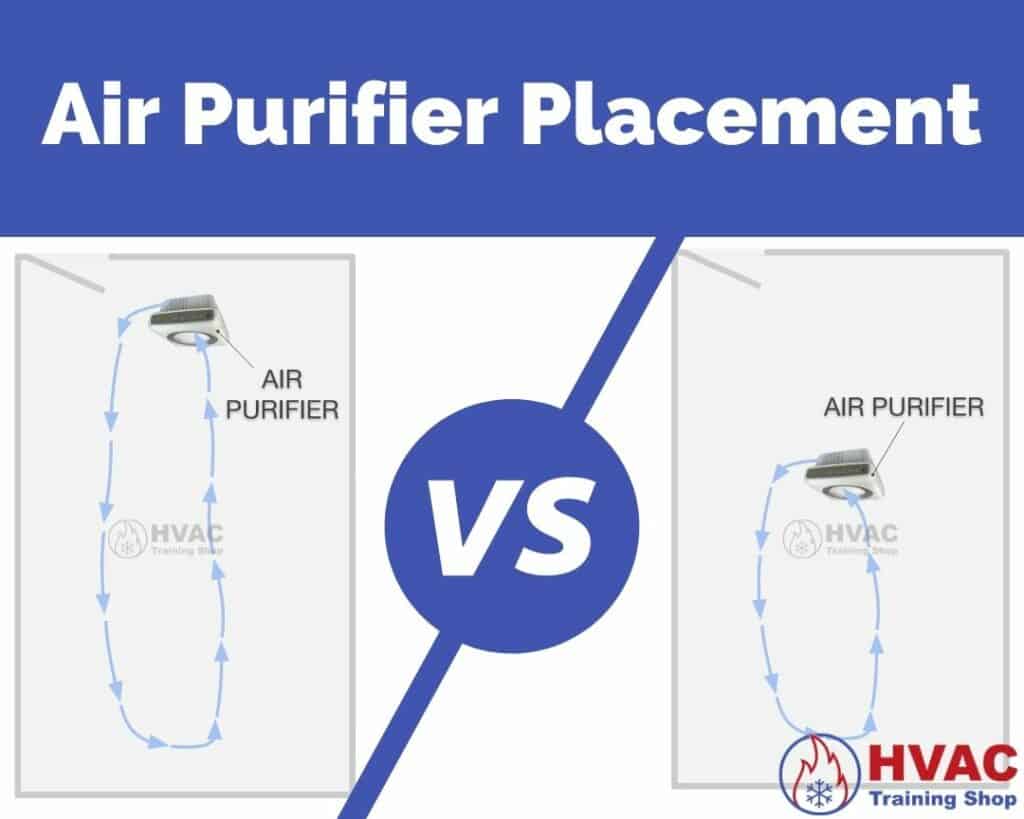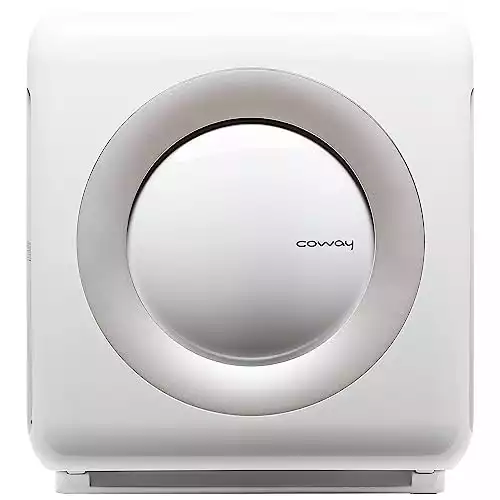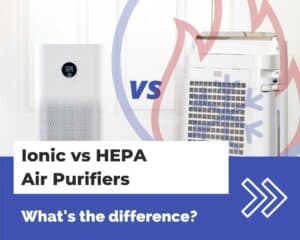HVAC Training Shop is reader-supported. As an Amazon Associate, I earn from qualifying purchases.
Do you use an air purifier in your home?
From bad smells to airborne particles, air purifiers will remove contaminants from your home’s air and help provide a comfortable living environment.
Figuring out where to place your air purifier in your home is the single biggest factor in how well it will perform.
In this article, I’ll cover every factor that you should consider when selecting the location for an air purifier in your home.
I’ll also go over a few example locations for air purifiers in different rooms in your home.
The best air purifier location for your home
The best location for an air purifier is in an open space with adequate airflow and close to sources of air pollutants.
No matter what type of air purifier you have, there are some general guidelines that you need to follow when selecting the best place for it:
- Give your air purifier adequate airflow
- Put your air purifier near air pollutants
- Keep your air purifier away from heat sources
- Keep your air purifier away from moisture
- Keep your air purifier away from electronics
I’ll go over them below.
Give your air purifier adequate airflow
Giving your air purifier adequate airflow is the most important factor in air purifier placement.
Without proper airflow, your air purifier won’t work.
Given that airflow is so important, you would think that placing your purifier right in the middle of your room would be best. However, that’s not always the case.
Placing your purifier towards one side of the room is ideal to maximize airflow in an area.
By placing your air purifier toward one side of the room, the vacuum created by the fan will suck in dirty air from the other side of the room.
You also need to make sure that your air purifier’s intake is free of obstructions. If the air intake is obstructed, the air purifier will work less efficiently.
The air purifier’s air vent also needs to be directed properly. Be sure that the discharge air stream is directed toward the center of the room to provide maximum air coverage.

Put your air purifier near air pollutants
When selecting a placement for your air purifier, intercepting pollutants at their point of entry is extremely effective.
Placing your air purifier near windows or doors is effective at filtering out pollutants before they get inside your home.
Outside air is the source of many particles that will reduce the air quality in your home.
Another good location for an air purifier is near sources of odors—such as your kitchen.
Cooking food, chopping onions, and the trash can are all sources of odors that can get into the rest of your home.
Keep your air purifier away from heat sources
Like any other machine, air purifiers get hot when operating.
To prevent your air purifier from overheating, keep your air purifier away from sources of heat.
Sunlight near windows or heat from furnace vents can damage an air purifier. Never leave your air purifier in direct sunlight for an extended period of time.
Keep your air purifier away from moisture
While air purifiers are good at removing particles from the air, they don’t remove moisture from the air.
In fact, excessive amounts of moisture can damage your air purifier.
Worse yet, excessive moisture will lower the lifespan of your air purifier’s filter.
Condensation damage to your air purifier is also a concern—so keep your air purifier away from your humidifier.
Keep your air purifier away from electronics
Keeping your air purifier out of the vicinity of electronics may also be necessary.
Why is that?
Common household electronics are sometimes affected by air purifiers.
Air purifiers can sometimes cause interference on TVs and radios.
An air purifier may cause a loss of WiFi signal if it’s placed too close to your router.
Make sure your air purifier is at least 6 feet away from any electronics.
Whether your air purifier affects your electronics depends on a multitude of factors—sometimes it takes a bit of trial and error.
Ionic air purifiers should always be kept away from electronics.
Ionic air purifiers create charged particles that bind to dirty air particles.
As the charged particles attach to dirty air particles, the dirt particles fall out of the air and land on a nearby surface.
If an ionic air purifier is placed near electronics, dirt particles will accumulate on your electronics.
Air purifier placement in your living room
Using your air purifier in the living room is a wise choice, especially if you spend a lot of time there.
One of the best places for an air purifier in your living room is near any source of air infiltration—such as a window or a door.
As people enter and exit your home, dirty air from the outside has a chance to get inside your home.
If you place your air purifier near the front door, it will be able to clean the dirty outside air before the air gets deeper into your home.
When selecting an air purifier for your living room, be sure that it is large enough to clean all the air in your living room.
Since your living room is often the largest room in your home, it’s important that the air purifier’s cleaning capacity is large enough for that room.
This air purifier comes equipped with a true HEPA filter. It is compact, extremely efficient, and has 3 fan speeds.
Air purifier placement in your bedroom
Placing your air purifier in your bedroom is a smart move because it’s a room that you spend a lot of time in.
One study found that air pollution can cause a reduction in sleep duration.
There are a few different methods by which air pollution affects sleep. So it’s important to keep the air clean inside your bedroom.
If you place an air purifier in your bedroom, be sure that it’s given sufficient clearance from walls and other objects. The idea is to give your air purifier adequate space for airflow.
Secondly, keep your air purifier away from any heaters or vents. Ensure that there are no sources of heat near the air purifier to prevent overheating.
Air purifier placement in your kitchen
Your kitchen is a room that breeds all sorts of smells and spores.
Placing an air purifier in your kitchen is a good way to intercept odors before they get to the rest of your home.
Mold, food particles, and byproducts of cooking are all sources of air contaminants. Smoke is one of the worst offenders, and it will impact your kitchen’s air quality when cooking.
If your place your air purifier in your kitchen, a good place to put it is somewhere near the trash can. Be sure that the air purifier has clearance from other objects and heat sources.
If you cook frequently, then you will need to change your air purifier’s filter more often. Oil, smoke, and food particles will accumulate in your air purifier’s filter quickly.
If you intend to use your air purifier to remove odors from your kitchen, be sure to use a carbon pre-filter. Carbon pre-filters will neutralize odor particles so they don’t cause any smells in your kitchen’s air.
How often should you change the filter in your air purifier?
Generally, you should change the HEPA filter in your air purifier every 6 months.
You may need to change the filter more or less often depending on how often you use your air purifier and how dirty the air in your home is.
Changing the filter in your air purifier is necessary to maintain your air purifier’s effectiveness.
If you don’t change the filter, the airflow through your air purifier will be reduced. Lower airflow means that it will take longer for the air purifier to remove particles from your room’s air.

Air purifier pre-filters
Using an air purifier pre-filter will prevent your main HEPA filter from getting clogged up with debris. A pre-filter will capture the majority of larger particles before they reach your HEPA filter.
Using a pre-filter greatly extends the main HEPA filter’s lifetime. HEPA filters tend to be pricey to replace, so extending their lifetime saves money in the long run.
Most air purifiers come with their own built-in pre-filters. So you won’t need an additional pre-filter. However, if your air purifier does not have a pre-filter, it is strongly recommended that you add one to the air intake.
Activated carbon pre-filters also provide your air purifier with odor control. Carbon pre-filters are able to eliminate odors from your room’s air. Many odor particles are able to go right through a HEPA filter, so having a carbon pre-filter helps eliminate odors.




Thank you for the advice,this is my first time using an air purifier. I never realized there are owner-related responsibilities that insure the longevity ,as well as, being able to enjoy the benefits clean safe air. Thanks RIC G.
Thank you for this article. When you place an air purifier near a window or door, should the air purifier face the window/door or face outwards to the room? I have a Winix 5000-2. I believe the air flow is on the top of the device. Thanks!
Hi Samira,
The airflow out of the air purifier should blow into the room.
Hope this helps,
-Trey